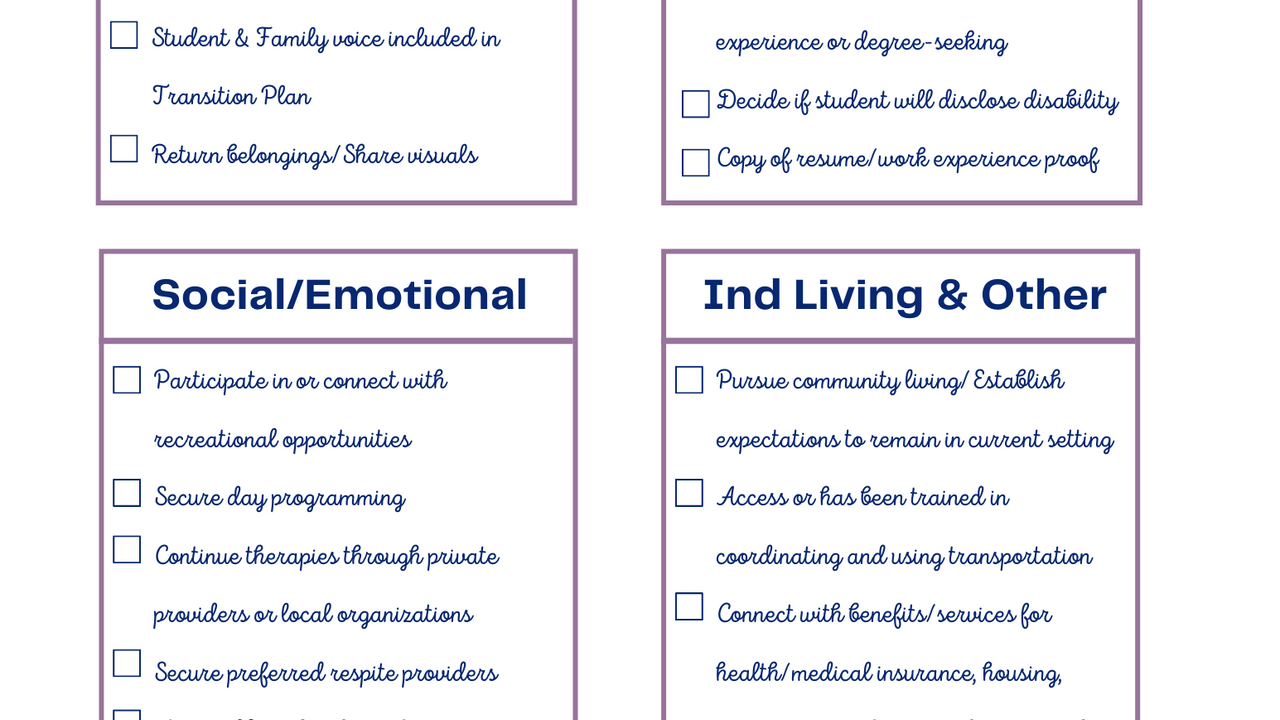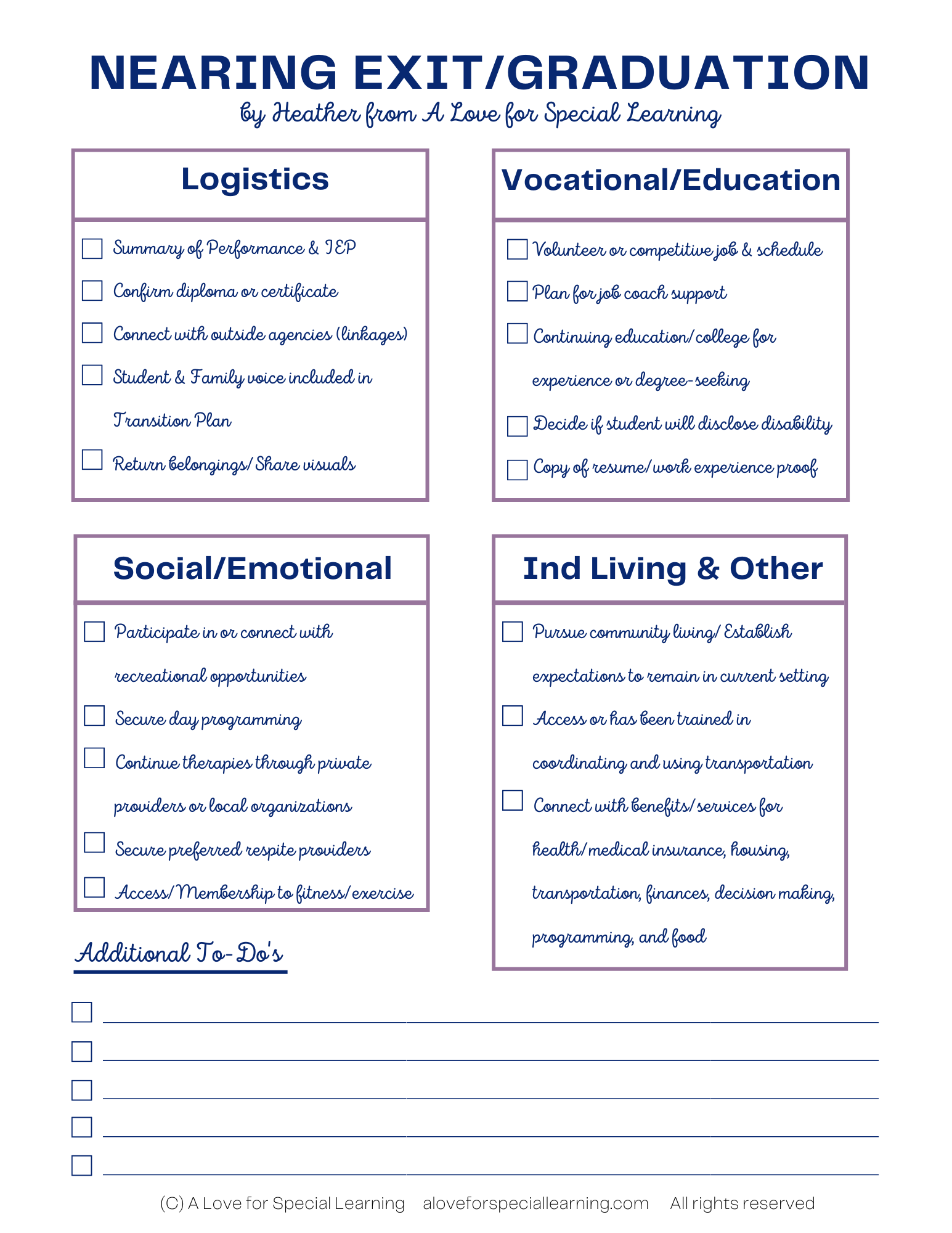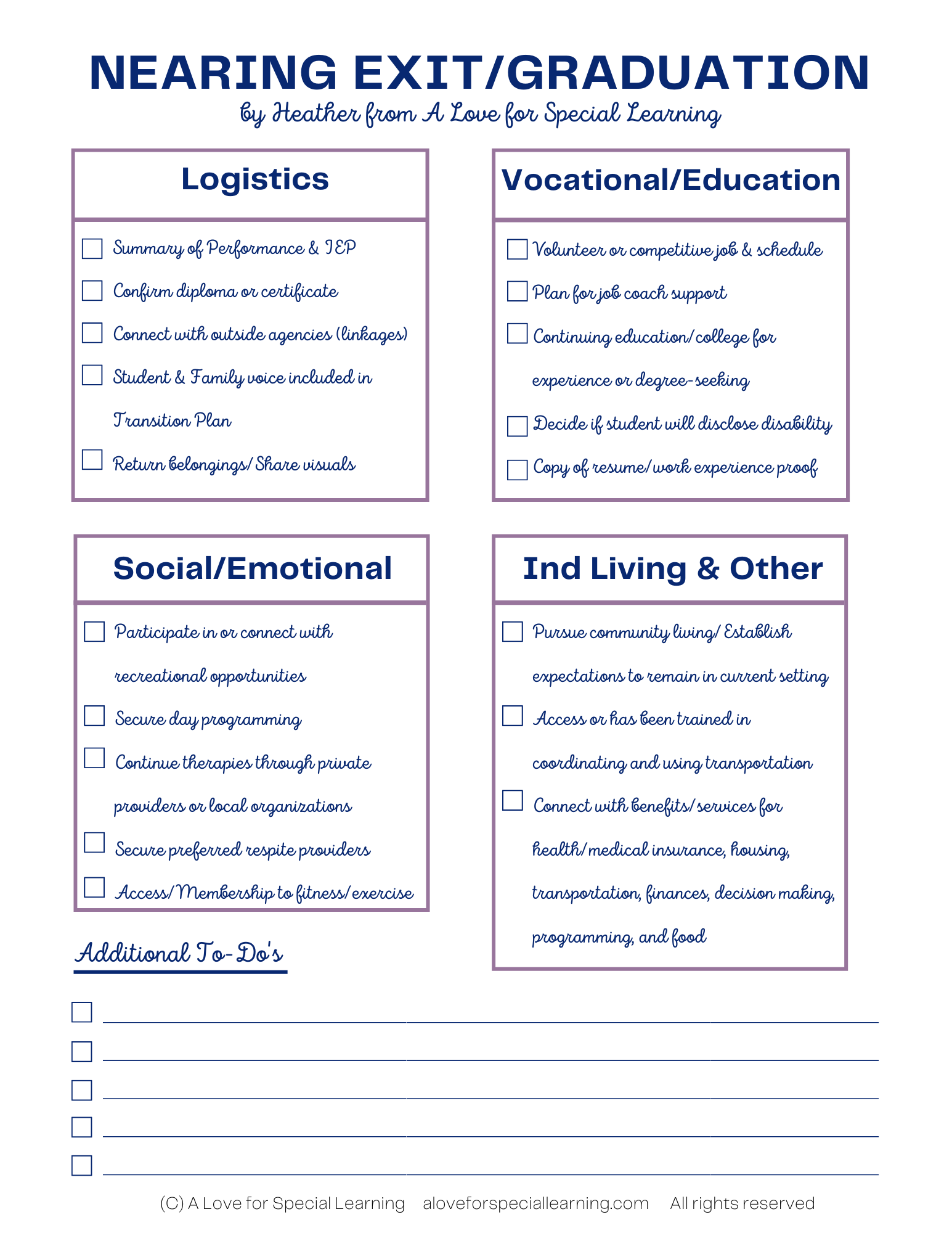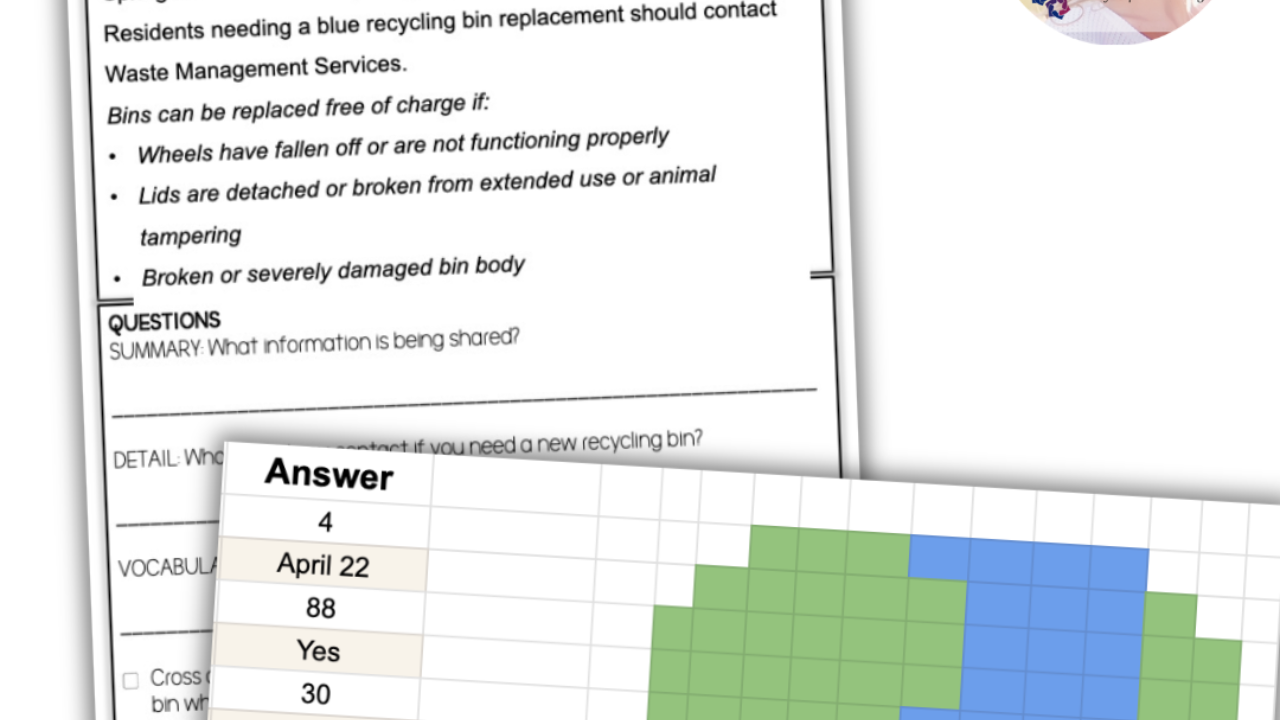How to Prepare Students (and Families) for Life After Special Education
Jan 04, 2022
You may or may not have started counting down the days until summer break, but if it feels within reach to you then you know your students and young adults are feeling it too.
Students and families start to feel that final countdown stress probably before you do. They know the bus will stop coming, the classes and outings will end, related services will stop, and the responsibility to schedule a full, meaningful day will rest with the student and family. Some students and families will take that thought and do everything to prepare and others will to try put off preparing for as long as possible (because they know nothing will compare to what their student currently receives). Can you blame them?

While it’s typically referred to as the ‘cliff of services’ in special education, it doesn’t have to, and, ideally it SHOULDN’T feel anything like a cliff. As a teacher, you can help your students and their families begin to prepare months (or better yet, years) before the proverbial ‘school bus stops coming.’
I’ve outlined 5 ways you can start supporting students and families for the final day of school so they are ready to jump into the ‘real world’ as prepared as possible.
5 Things To Do to Prepare a Student To Graduate or Exit from Special Education
1. Start with an informal transition meeting
I can’t stress this enough- HAVE AN INFORMAL TRANSITION MEETING WITH FAMILIES!!! Sorry for yelling, but I have had only positive experiences with these meetings. An informal transition meeting (find a conversation guide template here) is where you, the family, and the student come together to have an open and honest conversation about what the student’s ideal life would look like after they graduate or exit. You cover everything about their life, such as the day-to-day schedule, where they want to live, the ideal volunteer or work position, etc. This leads to sharing the hard realities of whether their dreams seems achievable given where the student is currently at or if the student could achieve more. It also creates the perfect opportunity to discuss when and how to seek services, supports, and funding to make all those dreams possible. See #3 for more on that!
*Plan for the informal transition meeting to last between 45-75 minutes and meet in person, if possible.
2. Create a family to-do list with calendar due dates
Before you shake hands and end the informal transition meeting, be sure to outline what steps the family needs to take and set due dates. Work backwards from the last day of school and prioritize tasks that will take the longest to complete first (like applying for SSI, if appropriate). Make a copy and give the family the original, keep the copy for yourself. Check-in periodically with the family for an update on their progress and remind or support them in any way they need. Tackling the first task is often the hardest, so consider making the very first step something quick and easy!
*Print on neon or bright paper so families can easily find it amongst stacks of white paper.
3. Inform and apply for appropriate benefits, services, and FUNDING
One of the best ways to prevent families and students from feeling like they fell off the cliff of services is to help them set up the appropriate benefits, services, and funding BEFORE they graduate or exit.
Find out what the student is eligible for, pass along contacts who can help them get set-up or approved, and then encourage them to begin these services and supports BEFORE school ends. This will help the transition from school life to post-school life a little smoother for both the student and the family.
If benefits, funding, services, and supports overwhelm you or you feel ill-equipped to discuss these with families, reach out to your school’s transition coordinator or register for the Confused to Connected Professional Development to increase your confidence and knowledge base!
4. Explicitly share contact information for post-exit
If your state is like Illinois, then you have a special section of the IEP transition plan to list organizations and agencies that families can reach out to for support in the future. For me, it usually lands somewhere on page 6 or 7 and 9/10 families will NEVER find it!
Take 3 minutes, copy that list into an email, text, or printable document for the family and pass it along to them. Families will feel like they have no one to turn to after school ends and hopefully this list of contacts will be posted somewhere on their refrigerator to reference.
*Extra bonus points for printing and sharing on neon or bright paper. Consider sharing the list with families more than once, too!
5. Practice!
For students who struggle with transitions, consider creating a fading plan to prepare both the student and family for post-school life.
What does a fading plan look like? It can look a million different ways, but here is an example:
About 4 weeks before the last week, start by fading one day. Add a day each week to fade until you get to 1 day their last week of school. A ‘fade day’ includes the student living their post-exit life. If this means staying at home, going to a volunteer site, or participating in a day program, then that is exactly what they should do. With a slow fade, families will have the school support available when things go well and when they don’t (and there will be hiccups, trust me)!
In my experience, students AND families need support in exiting from special education and a slow fade will help families to get services set-up prior to the last day of school. Supports might include respite providers, transportation, volunteer position, fitness center membership, etc.
Since this is optional and flexible, create a plan that will work for (and be in the best interest of) both the student and the family.
Nothing will compare to the quality of service that special education provides, but you can assist students and families in lessening their ‘cliff of services’ experience by following my 5 tips above.
Share below what you do to prepare students and families to graduate or exit from special education services.
















